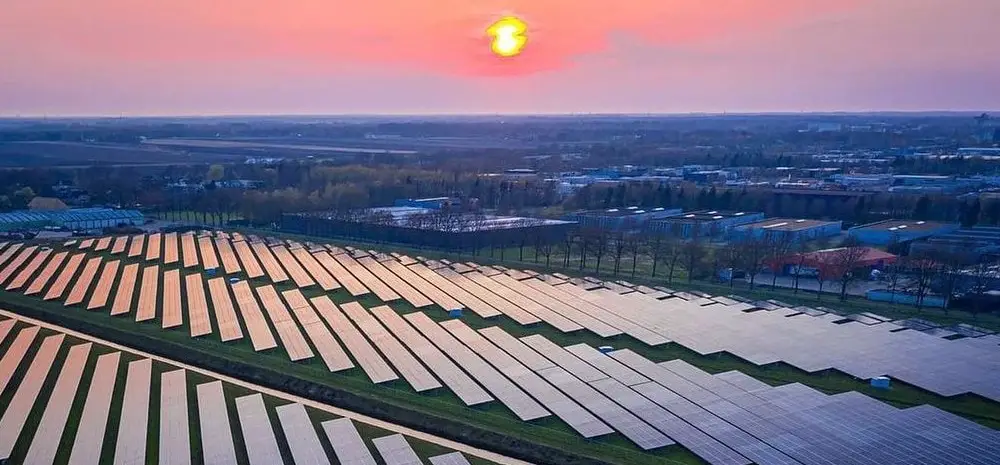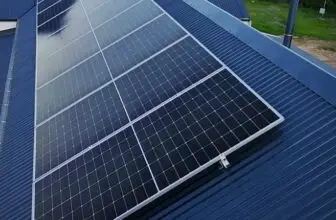
Solar farms are an increasingly popular way to generate renewable energy, and there are many good reasons for this. They can provide a reliable and cost-effective source of energy, they help to reduce our reliance on fossil fuels, and they can help to create jobs in the renewable energy sector.
Solar farms can provide a reliable source of energy. They can generate electricity even when the sun is not shining, and they can store energy for use when the sun is not shining. This means that solar farms can provide a consistent and reliable energy source, which is vital for businesses and households that rely on electricity.
How to Get Solar Power?
Contents
Solar power is the conversion of sunlight into electricity. It happens directly using photovoltaics (PV), or indirectly using concentrated solar power (CSP). To focus a large area of sunlight into a small beam, concentrated solar power systems use lenses or mirrors and tracking systems. Using the photoelectric effect, photovoltaics convert light into electric current.
Solar PV has turned into a multi-billion dollar industry and its technology is one of the fastest-growing energy sources in the world. There are a few ways to get solar power. The most common way is solar panels.
What Are Solar Farms?
Solar farms are large areas of land covered with solar panels that are used to generate electricity. Then the electricity is fed into the power grid. Solar farms can be either photovoltaic (PV) or concentrated solar power (CSP) systems.
PV solar farms use solar panels to convert sunlight into electricity. The electricity is fed into the power grid. CSP solar farms use mirrors to concentrate sunlight onto a central tower. The tower contains a heat exchanger which produces steam. To turn a turbine which generates electricity has used steam. Then the electricity is fed into the power grid.
Solar farms can be either ground-mounted or building-mounted. Ground-mounted solar farms are usually larger than building-mounted solar farms. Solar farms can be either privately owned or publicly owned.
How Do Solar Panels Work?
Solar panels convert light into electricity. They are made up of several individual solar cells, which are connected. The solar cells in the panel are made of a material that allows them to absorb and store the sun’s energy. When the sun shines on the solar panel, the solar cells convert the sun’s energy into electricity. The electricity can then be used to power lights, appliances, and other devices.
Solar panels are an environmentally friendly way to generate electricity, as they do not produce emissions or pollutants. They are also a renewable resource, as the sun will continue to produce energy for as long as it exists. Solar panels are becoming increasingly popular as a source of electricity, becoming more affordable and efficient.
Types of Solar Farms
Utility-Scale Solar Power
Utility-scale solar farms are large-scale solar power plants that provide electricity to utilities and energy companies. These solar farms can range in size from a few megawatts to hundreds of megawatts.
Utility-scale solar farms have a number of advantages over traditional power plants. Solar farms can be built quickly and at a lower cost than other power plants. Solar farms also have a smaller environmental impact than other types of power plants.
Solar farms can be located in a variety of locations, including on top of buildings, on unused land, or in deserts. Solar farms can also be built near population centers, which reduces the need for long-distance transmission lines.
Utility-scale solar farms have a number of disadvantages as well. Solar farms require a large amount of land, which can be difficult to find in some areas. Solar farms also require a large upfront investment, which can be a barrier for some utilities and energy companies.
Despite these disadvantages, utility-scale solar farms are a key part of the transition to a clean energy future. Solar farms provide clean, renewable energy that can help to reduce greenhouse gas emissions. Solar farms also create jobs and boost the economy.
Community Solar Farms
Community solar farms are a type of solar energy system that allows individuals and businesses to buy or lease solar panels to generate their own electricity. There are many benefits to community solar farms, including the ability to save money on energy bills, reduce your carbon footprint, and support the development of renewable energy.
Community solar farms typically have a central location where the solar panels are installed, and then the electricity generated is distributed to the individuals or businesses that have leased or purchased the panels. This allows everyone to benefit from solar energy, even if they don’t have the ability to have solar power fields on their own property.
There are many different sizes and types of community solar farms, so there is likely one that would be a good fit for your needs. Community solar farms can be a great way to save money on your energy bill, support renewable energy, and reduce your carbon footprint.
How to Establish a Solar System?
Solar farms can be built in a variety of sizes, from a few kilowatts to multi-megawatt systems. The first step in establishing a solar farm is to secure financing. This can be done through a variety of means, such as government incentives, private investment, or a combination of both. Once financing is secured, the next step is to select a site for the solar farm. The site must have good solar exposure and be large enough to accommodate the number of panels required for the desired power output.
After the site is selected and construction is underway, the next step is to connect the solar farm to the electricity grid. This is done through a process called interconnection, which requires approval from the local utility company. Once the solar farm is connected to the grid, it will begin generating power and supplying it to the utility.
Benefits of Solar Farms
Solar energy farms have a number of advantages over other types of power plants:
- Solar farms can be built on various sites, including brownfield sites, rooftops, and parking lots. This flexibility allows solar farms to be built in areas that are otherwise unsuitable for other types of development.
- Solar farms generate power without emitting greenhouse gases or other pollutants. This is a major benefit in an era of climate change. Solar farms also have a small footprint and can be built quickly.
- Solar farms create jobs. The solar industry employs more than 200,000 people in the United States. Solar farms also create indirect jobs in the construction, manufacturing, and maintenance industries.
- Solar farms can help to stabilize the electric grid. Solar power is a type of intermittent renewable energy, meaning that it is not available 24 hours a day. However, solar farms can provide power during peak demand hours, when the electric grid is under the most strain.
- Solar farms can provide power to remote areas. They can be built in remote areas that are not connected to the electric grid. This is especially beneficial in developing countries, where access to electricity is often limited.
These advantages make solar farms an attractive option for utilities and other large-scale operations.
FAQ
Can I Start My Own Solar Farm?
Yes, you can start your personal solar farm. There are many companies that will help you get started. You will need to find a good location that gets a lot of sunlight, and you will need to get permits from your local government. You will also need to buy or lease solar panels and have them installed.
How Much Money Does 1 Acre of Solar Panels Cost?
The cost of solar panels varies depending on the size of the system, the type of panels, and the location. However, the cost of solar panels is dropping every year, and they are becoming more and more affordable.
How Many Homes Can a Solar Farm Power?
A solar farm can power a significant number of homes, depending on the size of the farm. Larger solar farms can provide power to hundreds, if not thousands, of homes.
Conclusion
Solar farming is becoming more and more popular across the United States. They are a great way to produce renewable energy while also providing economic benefits to the local community. Solar farms can help to create jobs, increase tax revenue, and boost the local economy.









